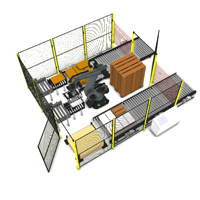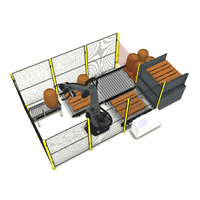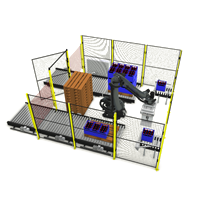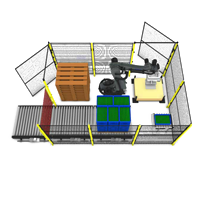
In today’s competitive industrial landscape, operational efficiency is no longer a secondary concern—it’s a strategic imperative. Rising costs, increasing customer expectations, and mounting supply chain complexities demand that businesses continuously scrutinise and refine the way they operate.
This article explores proven methods for evaluating and enhancing operational efficiency and performance across your business—whether you’re a lean-focused SME or a large-scale manufacturer managing complex supply chains.
Understanding Operational Efficiency
Operational efficiency refers to the ability of an organisation to deliver products or services using the least amount of resources possible—without compromising quality, safety, or service. It’s about doing more with less, but in a sustainable and scalable way. But to improve something, you must first be able to measure it.
Defining and Tracking Key Performance Indicators (KPIs)
The foundation of any efficiency programme starts with the right metrics. Without clearly defined KPIs, efforts to improve performance can become reactive rather than strategic.
Consider KPIs such as:
- Cycle time (how long it takes to complete a task or produce a product)
- Cost per unit (total cost divided by total units produced)
- Defect rates (number of defective units as a percentage of total output)
- Downtime (machine or process non-operational time)
- Customer satisfaction scores (indicative of quality and delivery reliability)
Establish a regular review cadence for these indicators. Visual dashboards and real-time reporting tools can make KPI tracking part of daily decision-making rather than a quarterly ritual.
Process Mapping: Making the Invisible Visible
Before you can improve a process, you must first understand it. Process mapping is a vital tool that gives a clear visual representation of how work flows through your organisation. By breaking down tasks, roles, inputs, and outputs, bottlenecks and redundancies quickly become apparent.
Look for:
- Repeated hand-offs
- Excessive approvals or manual inputs
- Areas with high variability or inconsistency
Even well-established workflows often reveal surprising inefficiencies when examined with fresh eyes.
Applying Lean and Six Sigma Thinking
Once process inefficiencies are identified, Lean and Six Sigma methodologies provide a structured approach to eliminating waste and reducing variation.
The DMAIC framework (Define, Measure, Analyse, Improve, Control) is particularly effective for continuous improvement projects. It ensures changes are backed by data and embedded in daily operations—not just surface-level fixes.
Lean focuses on flow and waste elimination; Six Sigma hones in on quality and variation. When used together, they form a powerful toolkit for process optimisation.
Harnessing Automation and Smart Technologies
Technology is a critical enabler of efficiency—but only when it’s applied strategically.
Automation can:
- Reduce manual handling
- Eliminate human error
- Increase consistency and throughput
- Provide real-time visibility into production performance
From robotic material handling systems to fully integrated production lines, modern automation solutions are increasingly flexible and scalable.
Pairing automation with intelligent software platforms—such as Manufacturing Execution Systems (MES) or ERP integrations—can provide a single source of truth across operations. This allows faster decision-making and more agile response to change.
Empowering Your Workforce
Operational excellence doesn’t come from machines alone. People remain at the heart of any improvement effort.
Invest in:
- Upskilling and cross-training
- Regular performance reviews and feedback
- Workshops that encourage problem-solving and innovation
When employees understand how their role contributes to overall performance—and are empowered to improve it—they become proactive drivers of change rather than passive participants.
Strategic Resource Allocation
Efficiency isn’t about pushing resources harder, but using them smarter.
Ask yourself:
- Are the right people working on the right tasks?
- Are machines operating at optimal capacity?
- Are materials available when and where they’re needed?
Tools like Gantt charts, resource planning software, and automated scheduling can help ensure alignment between demand and capacity—minimising idle time and overextension alike.
Strengthening Supplier Collaboration
Suppliers play a direct role in your operational performance. Poor communication, delayed deliveries, or inconsistent quality can ripple across your production schedule.
Evaluate suppliers regularly on:
- On-time delivery rates
- Lead time reliability
- Quality consistency
- Responsiveness and service
Establishing open, data-led conversations with your suppliers often uncovers new opportunities for joint improvement or innovation.
Intelligent Inventory Management
Inventory is often seen as a buffer—but excess stock ties up capital, consumes space, and increases the risk of obsolescence.
Consider implementing:
- Just-in-Time (JIT) strategies
- ABC analysis for inventory classification
- Forecasting tools to better match inventory with demand
Better inventory control not only boosts efficiency but also improves agility—allowing faster response to market shifts or customer demands.
Benchmarking Against the Best
How do you compare to the rest of the industry?
Benchmarking involves comparing your processes and performance against peers, competitors, or recognised best-in-class performers.
This doesn’t mean copying others blindly—but it can highlight areas where you lag behind, or identify practices worth adapting for your own context.
Tapping Into Customer Feedback
Ultimately, the customer is the judge of your operational effectiveness. Delays, defects, or poor service all reflect inefficiencies in your system.
Gather and analyse customer feedback regularly—via surveys, support logs, or direct conversations. Then loop these insights back into your continuous improvement efforts.
Remember: small changes that enhance customer satisfaction often yield internal productivity gains as well.
Cultivating a Culture of Continuous Improvement
Tools and tactics matter—but lasting efficiency gains come from cultural change.
Encourage your team to:
- Identify problems and propose solutions
- Share lessons learned from past projects
- Celebrate wins—both large and small
A culture of improvement embeds accountability and curiosity into everyday operations. Over time, it creates an environment where change is embraced, not resisted.
Using Data as a Decision Driver
Today’s data analytics tools allow unprecedented visibility into operational performance. From real-time dashboards to advanced predictive models, data can help uncover hidden patterns and pre-empt potential issues.
Adopt tools that:
- Consolidate data across departments
- Enable drill-down analysis
- Support custom reporting and alerts
The goal is to move from reactive troubleshooting to proactive, insight-led decision-making.
Managing Risk and Change Effectively
Every operation carries inherent risk—from equipment failure to labour shortages to regulatory shifts.
Building operational resilience involves:
- Identifying critical failure points
- Creating contingency plans
- Regularly testing your responses
Integrating risk management into your daily operations can prevent minor issues from becoming costly disruptions.
Leading Improvement with Project Management Principles
Improvement initiatives require structure and ownership. Applying project management methodologies ensures that resources are aligned, timelines are met, and benefits are realised.
Tools such as Gantt charts, Kanban boards, and milestone tracking are invaluable when rolling out process improvements or technology changes.
Keeping Cost Control Front of Mind
Efficiency often equates to lower operating costs—but only when cost control is actively managed.
Establish cost control practices such as:
- Activity-based costing
- Variance analysis
- Regular audits of overheads and waste
But remember: cost-cutting at the expense of quality or morale is rarely sustainable. Aim for smart savings that enhance—not hinder—long-term performance.
Conclusion: Efficiency as a Competitive Edge
Operational efficiency isn’t a one-time project—it’s a mindset, a set of tools, and a daily discipline. By continually assessing and improving how your organisation works, you unlock capacity, improve quality, and enhance customer value.
At Granta Automation, we help businesses design and implement automation solutions that directly support these goals—creating smarter, more agile manufacturing environments.
Explore our OEE Calculator and Basic Productivity Calculator to begin measuring your current efficiency and identify the next steps for improvement.
- Click here to Download your OEE Calculator
- Click here to Download your Basic Productivity Calculator
If you would like to know more about the Granta palletising systems or AMR/AGV systems, then please do get in touch on 01223 499488 or contact us at helpline@granta-automation.co.uk. We will be very happy to help.
Find out more…
- The Hidden Costs of Downtime in Food & Beverage Production
- How Robotic Palletisers Deliver Fast ROI for Manufacturers
- How to Overcome Labour Shortages in Manufacturing & Logistics
- Optimising Food Production with Automated Palletising Solutions
- The Real Cost of Manual Palletising: Why Automation is the Smarter Choice







